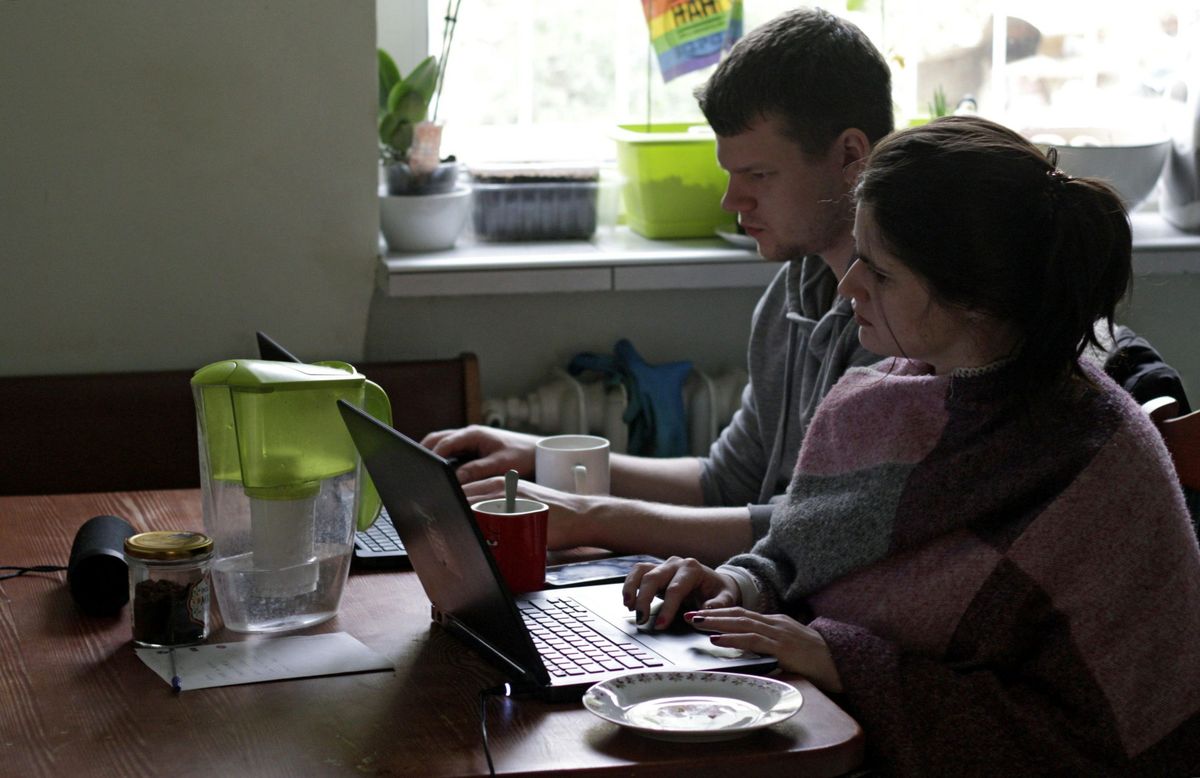Will workers return to the office or is “work from home” here to stay?

A few minutes every morning is all you need.
Stay up to date on the world's Headlines and Human Stories. It's fun, it's factual, it's fluff-free.
Should companies remain adamant about returning to the office, it is unlikely that the office itself will return to its pre-coronavirus state.
Some of America’s largest companies are divided on the path forward over half a year after the coronavirus first reached the United States.
Executives such as JPMorgan Chase & Co. head Jamie Dimon, BlackRock Inc. chief executive officer Larry Fink and even Netflix Inc. CEO Reed Hastings have all concluded that workers must return to their offices, sooner rather than later.
Dimon in particular has commented that continued “work from home” arrangements could see “alienation” in the workforce and long-term social and economic damage.
Yet these opinions are not shared by all. Some companies have already begun to scale back on office space as a transition to “work from home” arrangements appears more acceptable following COVID-19, with both Alphabet Inc and Apple’s heads embracing a new style of work for the future, shifting away from office-only.
The push by some to return to the office could be premature. Examples around the world should caution American businesses pushing to have workers at office desks once more, especially with cases in the US maintaining their high rates and further increases inevitable in closed-office spaces.
Should companies remain adamant about returning to the office, it is unlikely that the office itself will return to its pre-coronavirus state.
The “work from home” phenomenon
The outbreak of the coronavirus pandemic shut down many offices, factories and other workspaces in the US.
Some embraced new remote-working arrangements quicker than others. Tech companies such as Google announced employees could work from home into 2021, with Twitter CEO Jack Dorsey also announcing that “opening offices will be our decision. When and if our employees come back, will be theirs.”
Google’s CEO Sundar Pichai has remained committed to new remote working arrangements. In a recent interview, Pichai stated that, although his company believes that “having a sense of community is super important when you have to solve hard problems and create something new,” it was just as important for his company to “create more flexibility and more hybrid models” for working.
Pichai’s Google has allowed remote working arrangements to continue through June 2021, with an intra-office survey of Google employees showing that 62% believed they only needed to be in the office physically “some days” in order to do their work well. 20% said they didn’t need to come into the office at all.
Apple Inc. CEO Tim Cook has also been impressed by the results of the new remote working arrangements. Cook stated in one interview that he did not believe Apple would “return to the way we were because we’ve found that there are some things that actually work really well virtually.”
Some companies have already begun to transition toward a future where office space is less important. The multinational banking firm Deutsche Bank AG has reportedly permanently reduced its office space, adopting a new “hybrid model” to allow staff to split work between the home and office.
These new policies will see employees sign agreements on how many days per week they would like to work away from the office, reducing the need for large office spaces and, additionally, the risk of coronavirus transmission within those spaces.
Return to the office
Not all companies are on the same page, however.
Wall Street leaders, in particular, are especially adamant that large numbers of their workforces should return to the office.
JPMorgan & Chase Co., for instance, aims to return some 50% of its workforce back to the office, though the vast majority of its consumer unit staff – which totals some 122,000 employees – will remain working remotely until 2021.
JPMorgan CEO Jamie Dimon has been a strong supporter for the return to offices, even though cases across the US continue to fluctuate. New York City, the home of Wall Street, is also witnessing a resurgence of the virus, having recently reported its highest daily positivity rate since June.
Despite this, Dimon believes remote working arrangements are a temporary phenomenon – not the future. Dimon has expressed concerns about the productivity of workers who remain at home or remote and has said that remote working could lead to “alienation” among younger workers and long-term economic and social damage if it continues.
In a recent virtual panel discussion at the Singapore Summit, Dimon argued that “going back to work is a good thing,” and that it makes sense to “carefully open up and see if we can get the economy growing for the sake of everybody.”
Yet trends around the world display a cautionary tale.
In the United Kingdom, which successfully lowered the curve of coronavirus cases over the summer and began a full reopening of restaurants, schools and offices, workers are now being told to work from home if possible, with a series of new lockdown restrictions imposed that could last for six months.
The UK recently recorded its largest ever 24-hour increase in new cases for the duration of the pandemic. A full reopening and return to the office, then, is not without its risks.
New normal?
Should companies insist on a return from remote working arrangements, it is likely that big changes will occur in once-familiar office spaces.
As Tony Abate, an expert on airborne transmission of viruses and Vice President and Chief Technology Office of Atmos AirSolutions in Fairfield, Connecticut, recognizes, “there is no such thing as a COVID proof office.” In offices, “employees will sneeze, cough and even talk,” which can potentially all serve as moments of transmission for the coronavirus, Abate said in comments to TMS.
Though they cannot be fully COVID-proof, workers are indeed returning to offices in high numbers. This has seen “an increase in the need for Coronavirus disinfection equipment that operates while a space is occupied,” Michael Hennessy, the CEO of the New York City-based germicidal UVC company Wavelength Lighting, told TMS.
The need for such equipment is especially pronounced given the coronavirus is “primarily transmitted through the air between people occupying the same space,” according to Hennessy.
Both men agree that the technology exists for companies to reduce, if not fully negate, the risk of coronavirus transmission in workplaces. This can include specialist equipment like air disinfection carts and HVAC systems using bipolar ionization that can both reduce the spread of the virus in the air, as well as simply mandating that employees wear masks and adhere to social distancing in enclosed spaces.
Have a tip or story? Get in touch with our reporters at tips@themilsource.com




Comments ()